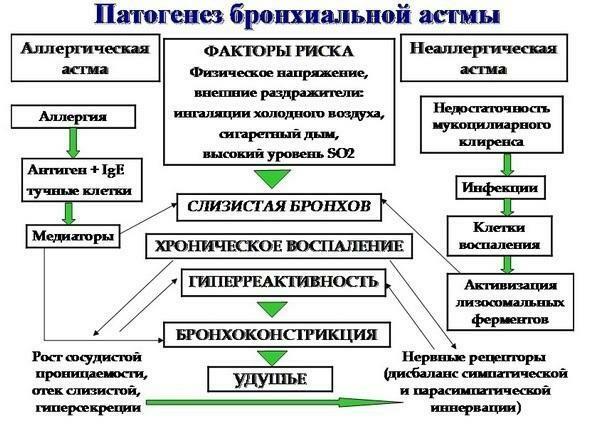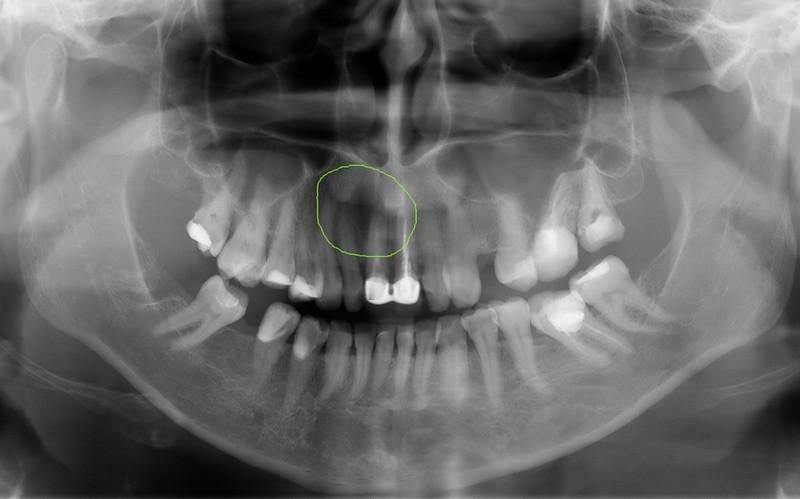Asthma is a chronic ailment that develops against the backdrop of inflammatory processes that occur in the airways. The development of the disease is affected not only by internal factors, but also by external factors. It can be allergens, chemicals, the influence of weather conditions, mechanical factors. One of the most common causes of bronchial asthma is an allergic reaction to dust. Additionally, accompanying factors can serve as frequent stressful situations, physical overwork.
If a person has abnormalities in the endocrine system, as well as weakened immunity, then the risk of developing a bronchial disease in the form of an asthmatic condition is increased.

asthma symptoms in the early stages
disease material Content
- 1 Features asthma
- 1.1 stages of asthma
- 2 Signs of the disease in the early stages
- 2.1 Asthma symptoms early stage
- 3 Additional symptoms of early stage
- 3.1 Video - Asthma
- 3.2 Video- Bronchial asthma. What can I do to breathe?
Features of bronchial asthma
This ailment has the immune-allergic nature of the inflammatory form that affects the bronchial tree. The main manifestation of symptoms can arise in the form of suffocation or bronchial obstructive syndrome. The pathology is quite serious, because it is extremely difficult to treat.
A distinctive feature of the disease are paroxysmal manifestations. The prerequisites for the onset of an asthmatic condition are the available allergic components in conjunction with the immune imbalance. These factors are joined by others, which determine the characteristics of the disease:
- Smooth muscle components of bronchial walls are characterized by hyperactivity. All external stimuli affecting the bronchial mucosa result in bronchospasm.
- The external environment, characterized by the release of allergens can damage the bronchial tree, in this case, it should take into account the lack of allergic manifestations of a general nature.
- The inflammatory process is manifested in the swelling of the mucous respiratory organs. Thus, the patency of the bronchi is aggravated.
- Insufficient mucus formation. When a patient suffers an attack of suffocation, then sputum excretion is absent or in minimal quantities.
- Inflammatory process is observed only in small and medium bronchi.
- To the extent that the ventilation processes are disturbed, the pulmonary tissue structure is transformed.

The pathogenesis of bronchial asthma
The stages of bronchial asthma
Several stages have been identified in medicine that are characterized by reversibility of bronchial obstruction and paroxysmal suffocation. When diagnosing the stage of bronchial asthma is defined as follows:
- intermittent stage;
- persistence of an easy stage( characterized by moderate severity of the disease);
- persistence of the middle stage( more severe course of the disease);
- is a severe persistent asthmatic condition.
In fact, the diagnosis of asthma is characterized as a slow, inflammatory process of a chronic nature that affects the bronchial tree. As a result, the patient has sudden seizures, characterized by suffocation with allergy symptoms. At the initial stages of the disease, seizures are less frequent with the possibility of rapid relief. But in the absence of treatment, they are greatly aggravated and become more frequent.
Symptoms of the disease in the early stages of
On the extent to which the pathology is detected in a timely manner, the further success of therapy depends. Therefore, the patient should pay attention to any alarming symptoms associated with a violation of respiratory function. Primary symptoms in the early stages are mainly in dyspnea, insignificant coughing, sometimes with wheezing and prolonged exhalations with shallow breathing.

Causes of bronchial asthma
Early stage asthma symptoms
| Symptoms of a disease | Short description | |
|---|---|---|
| Appearance of dyspnea up to a state of suffocation | It is characteristic that this symptom can occur when the patient is at rest during sleep and is equivalent to any physical exertion. A distinctive feature is the sudden appearance of an attack. The provoking factors are external irritants-allergens - dust, chemical emissions, contaminated air, smoke | |
| Cough | Asthmatic attack is mainly characterized by dry cough without discharge or with minimal sputum discharge. Synchronicity of appearance with dyspnea differs | |
| Rapid respiration of surface nature | A prolonged exhalation is added to the surface breathing. Patients emphasize the fact that during an asthmatic attack it is easy to inhale, but it is extremely difficult to breathe out. Therefore, for a full exhalation, it is necessary to exert a lot of effort. | |
| The appearance of wheezing | The respiratory process of a person with asthma can be characterized by hissing wheezing. This symptom can be diagnosed even remotely. During auscultation, wheezing is pronounced and confirms the diagnosis of | |
| Orthopnea | This specific symptom of an asthmatic attack is characterized by the patient's posture. That is, during the activation of the attack the patient sits down with lowered lower limbs and firmly grasps the chair or the bed with his hands. Thus, it is possible to realize the exhalation of |

. How does asthma arise?
Attention! Increased bronchial reactivity can only be characterized by some of the typical symptoms. Attacks can occur even at night, be short-lived and pass by myself. Only with the subsequent stage the symptomatology acquires a progressive character. Therefore, regardless of the frequency of attacks, you should not miss treatment at an early stage of the pathology.
Additional symptomatology of the early stage of
Bronchial asthma in the development stage is characterized by the appearance of common disorders in the body, which can not be ignored when determining the general symptoms:
- The patient begins to feel general weakness, followed by a characteristic malaise. It is especially pronounced when an attack occurs, when a person can not produce any active movements. The only manipulation that a patient can make is to adopt an orthopnea posture. The interictal period is not distinguished by a violation of physical activity, but with an increase in the severity of the disease, the symptom becomes more pronounced.
- Acrocyanosis. When a patient has a heavier degree of flow, then against the background of a disturbance of the respiratory function, problems arise, such as blue skin and acrocyanosis.
- Tachycardia. The average severity of the disease and the lighter degree are characterized by a heart rate of 90 beats per minute, but with a severe form of asthma can be increased to 130.

Inflammatory factors of bronchial asthma
- Lesion of nail plates. If the patient is diagnosed with asthma, then dystrophic changes in the nail plates should be expected.
- Emphysema of the lungs. If the ailment develops over a long period, then signs of emphysema - weakened breathing, swelling of the supraclavicular parts of the body, a significant expansion of the thorax are not excluded.
- Symptoms of the pulmonary heart. This feature refers to a severe form of pathology. The ailment leads to pulmonary hypertension, which increases the heart.
- Headaches. The patient may experience frequent dizziness with an additional headache. This is due to respiratory insufficiency caused by asthma.
- An increased risk of allergic reactions, as well as such ailments as rhinitis, dermatitis and eczema.

Treatment of bronchial asthma
This is important! Symptoms of asthma already in the first stages are difficult not to notice, as the violation of respiratory function manifests itself very first. To the best of the fact that the disease is difficult to cure, it is necessary to conduct a timely diagnosis and begin treatment.
More detailed information about bronchial asthma can be found in the video.



